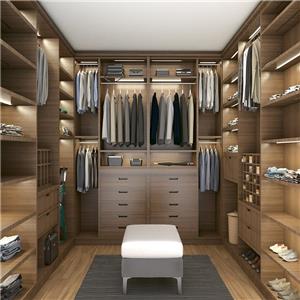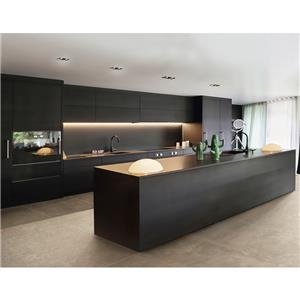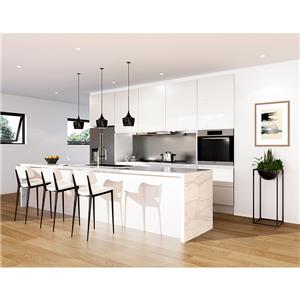Navigating the Kitchen Cabinets Market in the United States: A Comprehensive Guide
Cabinets play an important role in both practicality and aesthetics, and choosing the right kitchen cabinet manufacturer can be the difference between having peace of mind in your kitchen or feeling dissatisfied every time you enter the room.
I. Introduction
A. The importance of kitchen cabinets in home design.
--1. Storage Solutions:
Cabinets provide ample storage space for kitchen essentials, including cookware, utensils, and groceries. Well-designed cabinets help keep the kitchen organized and clutter-free.
--2. Aesthetics:
Cabinets contribute significantly to the overall aesthetic appeal of the kitchen. The style, color, and material of the cabinets can enhance the visual appeal and set the tone for the entire kitchen design.
--3. Functionality:
Cabinets are designed to make the kitchen more functional. They house appliances like ovens and microwaves, and their layout can optimize workflow, making cooking and cleaning more efficient.
--4. Value Addition:
High-quality and well-designed kitchen cabinets can add value to a home. Potential buyers often consider the kitchen as a key factor, and appealing cabinets can make a lasting impression.
--5. Personalization:
Cabinets offer opportunities for personalization in terms of design, finishes, and hardware. Homeowners can express their style preferences and create a kitchen that suits their taste and lifestyle.
--6. Durability and Longevity:
Investing in durable materials for cabinets ensures their longevity. Since the kitchen is a high-traffic area, sturdy cabinets contribute to the overall resilience of the space.
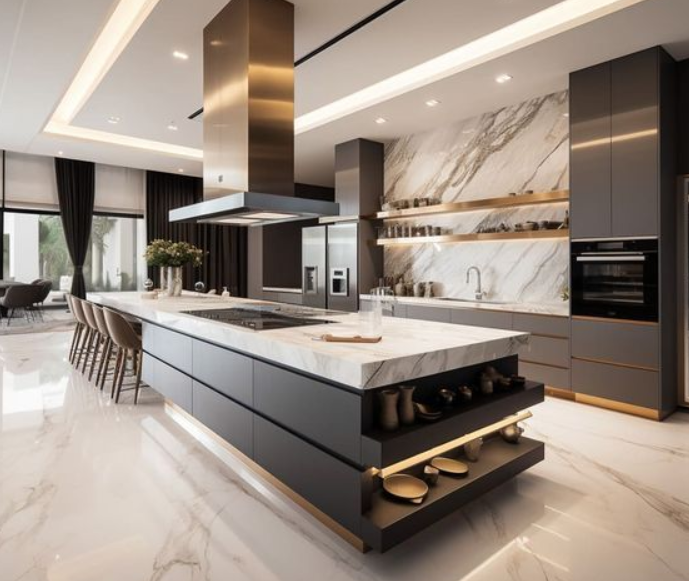
B. The significance of choosing the right cabinets for your dream home.
--1. Aesthetic Appeal:
Cabinets contribute significantly to the overall look and feel of your home. The right choice of cabinet style, color, and finish can enhance the aesthetics of your space, creating a cohesive and visually appealing design that aligns with your vision for your dream home.
--2. Functionality and Storage:
Cabinets are crucial for providing storage solutions in different areas of the house, not just the kitchen. Choosing cabinets with the right configuration and features ensures efficient storage, organization, and easy access to items, promoting a clutter-free and functional living environment.
--3. Lifestyle and Preferences:
Your dream home should reflect your lifestyle and personal preferences. Customizing cabinets allows you to tailor the design to your specific needs, whether it's incorporating special storage for hobbies, creating a home office setup, or optimizing space for entertainment.
--4. Quality and Durability:
Investing in high-quality cabinets ensures their longevity and durability. Well-constructed cabinets not only withstand daily wear and tear but also contribute to the overall durability of your home, providing lasting value for your investment.
--5. Resale Value:
The right cabinets can positively impact the resale value of your home. Potential buyers often pay attention to the quality and design of cabinets, considering them a key feature in their decision-making process. A well-designed and functional kitchen, for example, can be a strong selling point.
--6. Energy Efficiency:
In some cases, cabinets can contribute to energy efficiency. For instance, choosing sustainable and eco-friendly materials can align with green building practices, promoting a more environmentally friendly home.
--7. Personal Expression:
Your home is a reflection of your personality and style. Choosing the right cabinets allows you to express yourself and create a space that truly feels like your own. Whether it's a modern, classic, or eclectic design, cabinets play a role in shaping the character of each room.
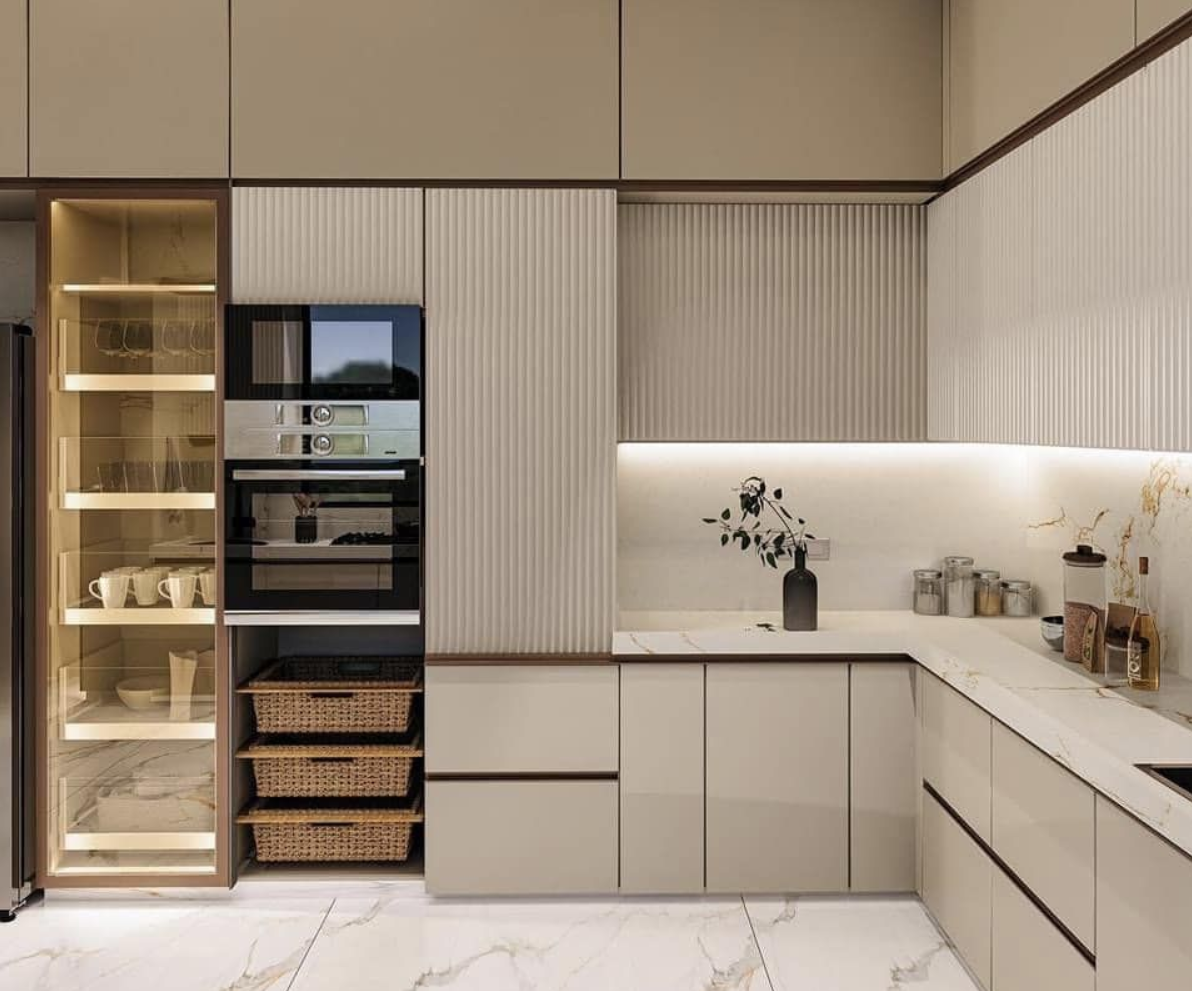
II. Understanding the U.S. Kitchen Cabinets Market
A. The vast and diverse kitchen cabinets market in the United States.
-- The United States kitchen cabinets market is expansive and diverse, offering a plethora of options to meet varied consumer preferences. Spanning a range of styles, materials, and finishes, the market caters to the dynamic tastes of homeowners. From traditional wooden cabinets to modern, sleek designs incorporating glass and metal, the industry showcases versatility. With a mix of stock and custom options, it accommodates diverse budgets. Notably, the market reflects contemporary trends, incorporating smart technologies, sustainable materials, and innovative storage solutions. Overall, the U.S. kitchen cabinets market is characterized by constant evolution, providing consumers with a broad spectrum of choices for personalized and functional kitchen spaces.
B. The role of kitchen cabinets in shaping the overall aesthetics of American homes.
-- Kitchen cabinets play a pivotal role in shaping the overall aesthetics of American homes. Serving as focal points in kitchens, their style, color, and design significantly influence the visual appeal. Traditional wooden cabinets exude warmth and classic charm, while contemporary choices contribute to sleek, modern aesthetics. The cohesive integration of cabinets with the overall home design enhances the aesthetic flow, creating a harmonious living space. As functional and decorative elements, kitchen cabinets not only provide storage but also contribute to the character and ambiance of homes, reflecting diverse design preferences across the rich tapestry of American residential architecture.
III. Types of Kitchen Cabinets in the U.S.
A. Stock Cabinets
-- Ready-made, pre-fabricated stock cabinets are mass-produced, off-the-shelf kitchen cabinets available in standard sizes and designs. These cost-effective options offer a quick and convenient solution for homeowners. While lacking the customization of custom cabinets, stock cabinets are readily available, making them an accessible choice for those seeking affordable and efficient kitchen storage solutions.
-- Pros of stock cabinets include affordability, quick availability, and a variety of styles. However, they may lack customization options, fit issues in non-standard spaces, and use lower-quality materials. Choosing stock cabinets is efficient for budget-conscious projects but may compromise on tailored design and high-end materials found in custom options.
B. Semi-Custom Cabinets
-- Semi-custom cabinets offer a middle ground between stock and custom options. They allow some personalization with choices like finishes, materials, and hardware. While not entirely bespoke, semi-custom cabinets provide flexibility, catering to individual preferences and enhancing the overall kitchen design.
-- Semi-custom cabinets offer homeowners a balance between affordability and personalization. With options to choose finishes, materials, and hardware, they provide flexibility in design. This middle-ground solution caters to individual preferences while maintaining a more budget-friendly approach compared to fully custom cabinets.

C. Custom Cabinets
-- Fully customized, made-to-order cabinets are tailored to precise specifications, offering homeowners complete control over design, materials, dimensions, and features. This option allows for personalized solutions, ensuring a unique and high-quality kitchen design that meets specific needs and preferences.
-- Custom cabinets cater to unique design preferences by allowing homeowners to dictate every aspect of their creation. From materials and finishes to dimensions and features, the flexibility of fully customized cabinets ensures a personalized and one-of-a-kind kitchen design that aligns perfectly with individual tastes.
IV. Popular Styles and Designs
A. Contemporary and Modern Cabinets
-- Contemporary kitchen cabinets are characterized by sleek, clean lines, minimalist design, and a focus on functionality. Often featuring flat surfaces, bold colors, and innovative materials like glass and metal, these cabinets create a modern, uncluttered aesthetic in today's kitchen designs.
-- Popular modern cabinet designs include flat-panel cabinets with clean lines, handle-less cabinets for a seamless look, open shelving for an airy feel, and two-tone cabinets combining contrasting colors. Innovative materials like glass, metal, and lacquer contribute to the sleek and stylish appeal of modern kitchen designs.
B. Traditional and Classic Cabinets
-- Traditional kitchen cabinets are characterized by ornate details, raised panel doors, and rich wood finishes. They often include decorative molding, intricate carvings, and antique hardware. Classic and timeless, these cabinets evoke a sense of warmth and sophistication in traditional kitchen designs.
-- Classic design inspirations for timeless appeal in kitchen cabinets include Shaker style with its simple, clean lines, raised-panel cabinets for traditional elegance, and beadboard detailing for a charming rustic touch. Neutral colors and natural wood finishes contribute to a timeless and enduring aesthetic.
C. Transitional Cabinets
-- Blending contemporary and traditional styles in kitchen cabinets involves combining sleek, modern elements with classic details. This fusion may include using traditional materials in a minimalist way, incorporating modern hardware, or pairing traditional cabinetry with contemporary countertops for a harmonious and balanced design.
-- Transitional cabinets cater to diverse tastes by seamlessly blending elements of both traditional and contemporary styles. This design approach offers a balanced and versatile look, accommodating various preferences. The combination of classic and modern features allows homeowners to create a timeless yet up-to-date kitchen aesthetic that appeals to a wide range of tastes.
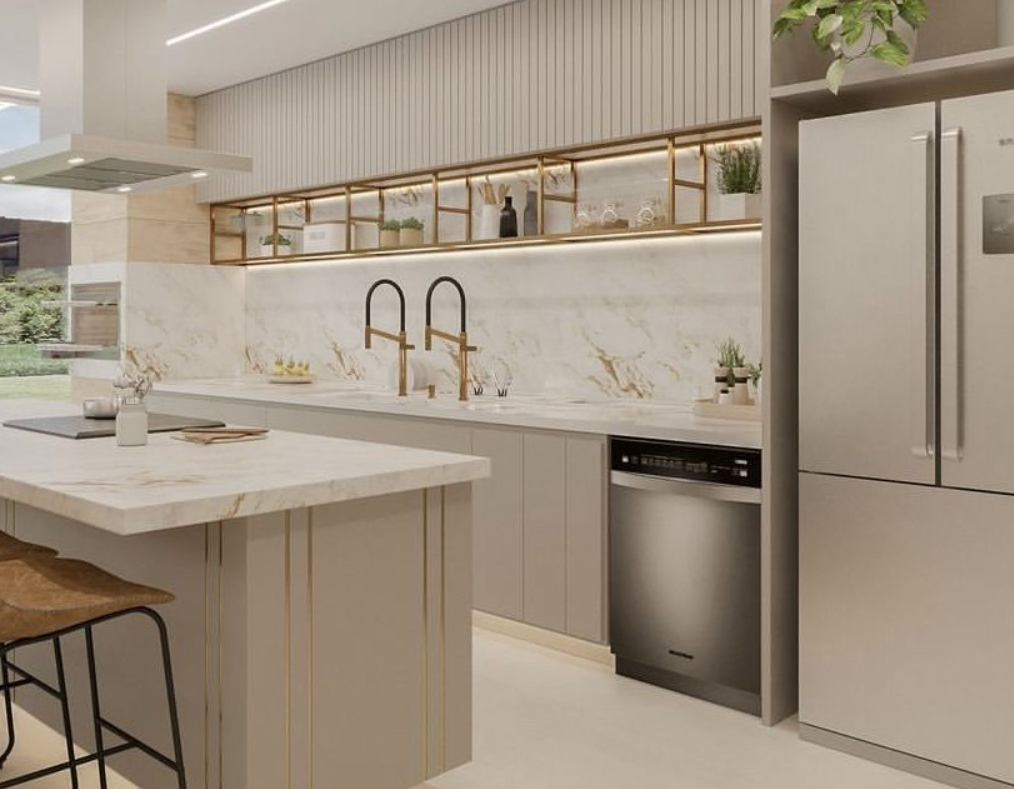
V. Materials Matter: Cabinet Options
A. Wood Cabinets
-- The popularity of different wood types in kitchen cabinets varies based on factors like aesthetics, durability, and cost. Oak is a classic choice known for its strength and distinct grain pattern. Maple offers a smooth, consistent appearance. Cherry is favored for its rich color and elegance. Birch and pine are more budget-friendly options. Exotic woods like mahogany and bamboo appeal to those seeking unique and eco-friendly alternatives. Trends may shift, but the enduring popularity of these wood types lies in their ability to complement diverse styles and preferences, providing homeowners with a wide range of choices for their kitchen cabinets.
-- Selecting wood cabinets for a warm, natural look offers timeless aesthetics, a variety of colors, and versatile design options. With durability, customization potential, and an eco-friendly appeal, wood cabinets create a cozy and inviting atmosphere while blending seamlessly with diverse kitchen styles.
B. Laminate Cabinets
-- Laminate cabinets offer a winning combination of affordability and versatility. Their cost-effective nature makes them budget-friendly, while the availability of various colors, patterns, and textures allows for versatile design options. Laminate cabinets are a practical choice for homeowners seeking stylish and cost-efficient solutions for their kitchen spaces.
-- Ideal for budget-friendly projects and modern aesthetics, laminate cabinets are suitable for high-moisture areas. To maintain, regularly clean with a mild, non-abrasive cleaner, avoid harsh chemicals, gentle scrub for stains, wipe excess moisture promptly, and protect from extreme heat.
C. Metal and Glass Cabinets
-- Metal and glass cabinets bring a modern edge to kitchen design. Sleek aesthetics, reflective surfaces, and versatility define their appeal. Whether using stainless steel for a contemporary look or incorporating glass for transparency, these options create a stylish and sophisticated atmosphere in modern kitchens.
-- Integrating metal and glass into kitchen design requires considerations for style cohesion, functionality, lighting enhancement, and maintenance. Choose durable finishes, balance aesthetics with practicality, and utilize lighting to showcase the reflective qualities, ensuring a harmonious and functional kitchen space.
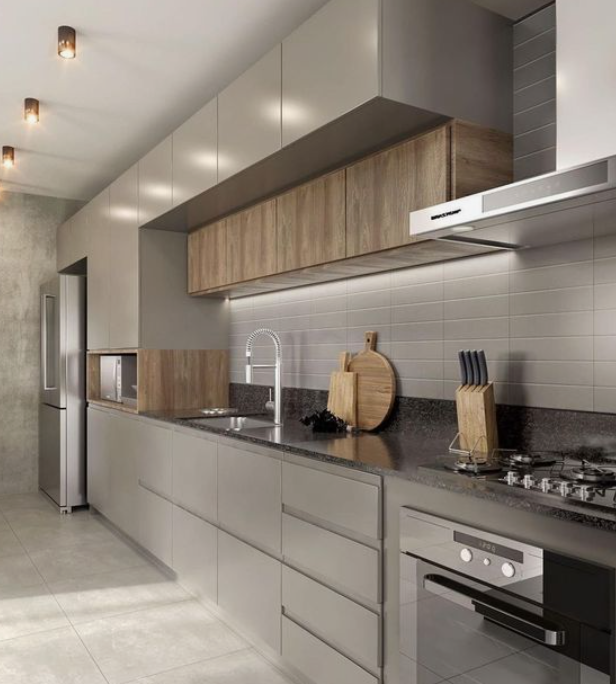
VI. Budget Considerations and Cost Factors
A. Factors Influencing Cabinet Costs
-- Cost factors in kitchen cabinets include materials (wood, laminate, metal), construction type (stock, semi-custom, custom), design complexity, hardware quality, and finishes. Installation, additional features, and brand reputation also contribute to the overall cost, allowing for a range of budget options for homeowners.
-- The impact of materials, design complexity, and customization on kitchen cabinet pricing is significant. High-quality materials like solid wood can elevate costs, intricate designs or customizations increase labor expenses, and unique finishes add to the overall price. Balancing these factors allows homeowners to tailor cabinets to their preferences while considering budget constraints.
B. Budget-Friendly Options
-- Affordable cabinet options without compromising quality include laminate cabinets for versatility, thermofoil cabinets with a wood-like appearance, prefabricated stock cabinets for cost-effectiveness, ready-to-assemble flat-pack cabinets for DIY ease, and medium-density fiberboard (MDF) cabinets for a balance of affordability and durability.
-- Shop cost-effectively for cabinets by researching and comparing prices, opting for standard sizes, considering ready-to-assemble (RTA) options, exploring alternative materials, and taking advantage of sales and discounts. This strategic approach ensures affordability without compromising on quality or style.
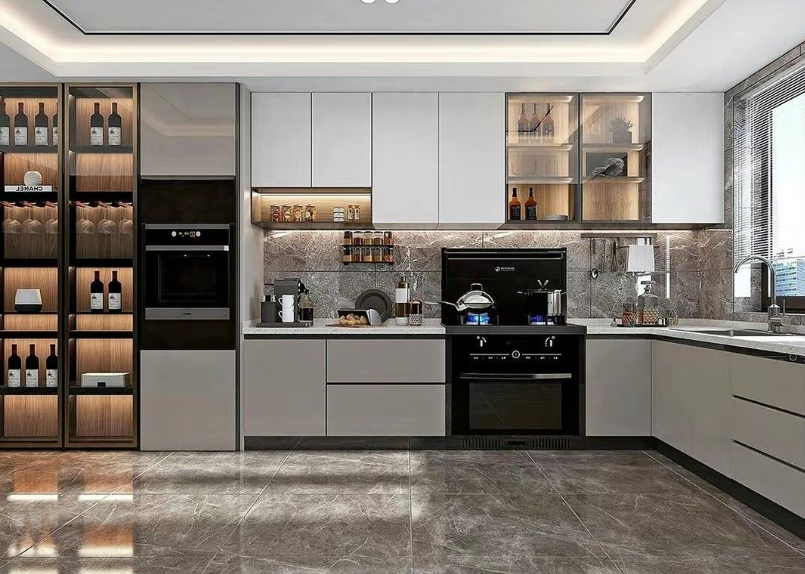
VII. Where to Shop for Kitchen Cabinets
A. Local Retailers
-- Buying from local kitchen cabinet retailers offers advantages like personalized service, quick delivery, and easy communication. Supporting local businesses contributes to the community's economy, while showroom visits enable customers to inspect cabinets before purchase. These factors enhance the overall shopping experience and post-purchase satisfaction.
-- Navigate local stores effectively by researching beforehand, measuring your space accurately, setting a budget, seeking staff recommendations, and physically inspecting cabinet quality. Inquire about services like delivery and installation, and take advantage of any post-purchase support. These tips streamline the shopping process and ensure informed decisions for your kitchen cabinets.
B. Online Retailers
-- Online kitchen cabinet retailers provide unparalleled convenience and variety. Browse extensive catalogs from the comfort of your home, access a wide range of styles and finishes, and benefit from customer reviews. Virtual tools often allow visualizing cabinet choices in your space, simplifying the selection process and offering diverse options for every taste.
-- Exercise caution when shopping for cabinets online. Ensure accurate measurements, research material quality through customer reviews, and familiarize yourself with shipping policies and return procedures. Use online visualizers for design previews and verify the retailer's credentials for legitimacy. Thorough precautions enhance the online shopping experience for kitchen cabinets.
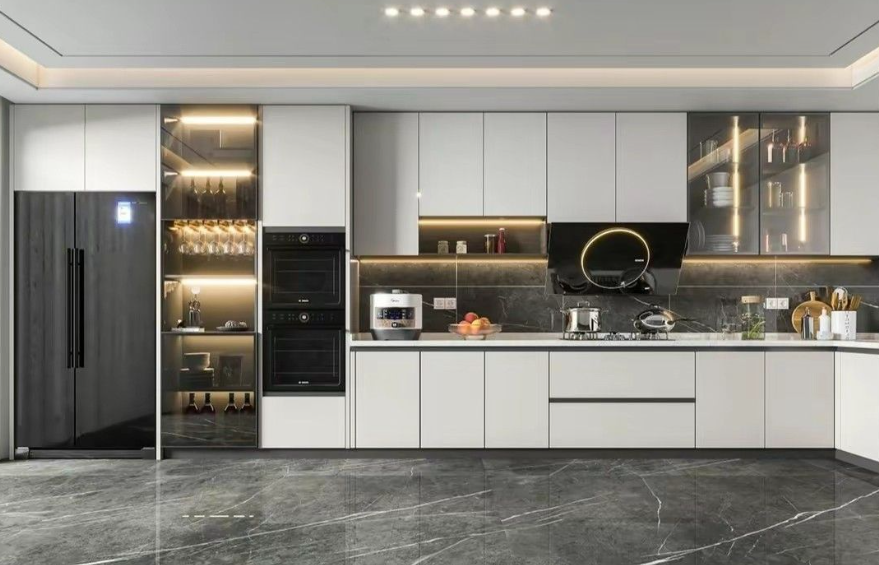
VIII. Trends in U.S. Kitchen Cabinets
A. Smart and Integrated Features
-- The rising trend of smart kitchen cabinets involves integrating technology for enhanced functionality. Cabinets with built-in sensors, lighting, and charging ports streamline tasks. Smart features like touch-activated doors and integrated organizational systems contribute to a modern, efficient, and tech-savvy kitchen design.
-- Integrated features enhancing functionality in smart kitchen cabinets include touch-activated doors, built-in sensors for motion-activated lighting, USB charging ports, and organizational systems with adjustable shelving and pull-out racks. These features optimize convenience and efficiency in modern kitchen designs.
B. Color and Finish Trends
-- Neutral color palettes like white, gray, and beige remain popular for kitchen cabinets, creating timeless and versatile designs. Darker tones, such as navy and deep greens, add a touch of sophistication. Finishes like matte, glossy, and natural wood grains cater to diverse tastes, providing homeowners with an array of stylish options for their kitchen cabinets.
-- Color trends significantly impact overall kitchen design, influencing the mood, style, and visual appeal. Neutral tones create a timeless and versatile backdrop, while bold colors add personality and a contemporary edge. The choice of colors in cabinets, walls, and accessories sets the tone, reflecting current design aesthetics and personal preferences.
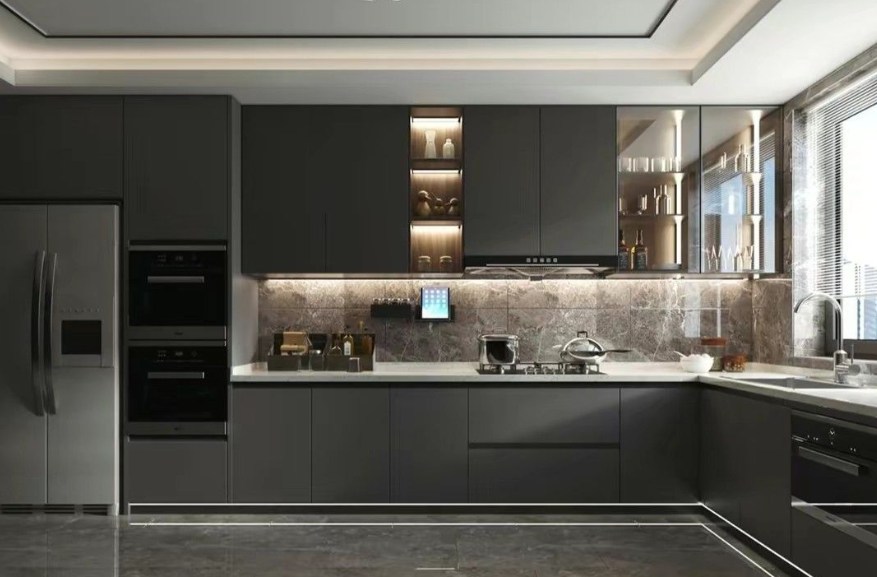
IX. Conclusion
-- Navigate the U.S. kitchen cabinets market by researching materials, comparing prices, and considering stock or custom options. Balance aesthetics with functionality, explore local and online retailers, and utilize design tools for informed decisions. Prioritize quality and choose cabinets that align with your style and budget.
-- Embrace the journey of discovering diverse cabinet options for your dream kitchen. Explore materials, styles, and finishes, balancing functionality with aesthetics. Whether local or online, the perfect cabinets await to bring your vision to life, creating a kitchen that truly reflects your unique taste and lifestyle.


